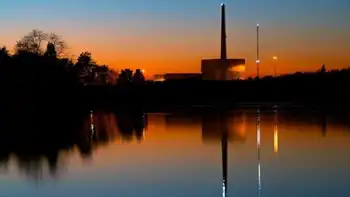Ontario holds AECLÂ’s fate
By Globe and Mail
Protective Relay Training - Basic
Our customized live online or in‑person group training can be delivered to your staff at your location.

- Live Online
- 12 hours Instructor-led
- Group Training Available
That decision will effectively determine the fate of AECL, and particularly its considerable investment in the Advanced Candu Reactor - the ACR 1000. It could even determine the amount of refurbishment business for Ontario's existing Candu reactors.
All 20 of Ontario's existing power reactors, some 14,000 megawatts, are of the Candu design; they supply roughly 50 per cent of the province's electricity. The province's government has committed to the same capacity for the next 25 years, but not to the Candu design or how much nuclear capacity will be new reactors versus refurbished ones.
Two of Crown corporation Ontario Power Generation's reactors at Pickering have been refurbished, with questionable success, and the government has entered into a generous contract with Bruce Power to refurbish four of the eight reactors at the Bruce site. It is a complex and risky mega-project. But the fate of the remaining reactors depends not only on the outcome at Bruce but also on the cost of new reactors.
The government and OPG are about to find out what that cost is. They are in the midst of a competitive process to acquire a new nuclear facility at Darlington. It is a design-build request for proposals. Two units (each either 1,100 megawatts or 1,600 megawatts) are required, with an option for two more.
The bidder must be able to achieve a construction licence from the Canadian Nuclear Safety Commission by 2012, and be commercially operational through 2018-2019. There are reportedly three proponents: AECL, Westinghouse Electric Co. and Areva Group.
Eighty per cent of the evaluation is based on capital costs, operating costs, technology design readiness and schedule risk-management plans. The other 20 per cent depends on the proponent's relative contribution to Ontario's GDP from this project, future projects by the winner anywhere and additional investments promised specifically for Ontario.
Ontario should be applauded for its thoughtful decision to go to an open and competitive process in its choice of technology for new nuclear power plants. It is a very important departure from politics as usual. The only thing better may have been to have the design-build competition followed by a competition to choose an operator.
But this procurement is critical for more than just the future cost of electricity to Ontario customers. For AECL, winning is essential to its continued existence as a purveyor of the next generation of Candu reactors, and indeed perhaps as a commercial operation of any kind, given the abandonment of its next-generation Maple reactors in the medical isotope business.
Nuclear power reactor sales in Alberta and Saskatchewan - an important technological option for the essential task of reducing the oil sands carbon emissions - will be heavily influenced by the Ontario result. And international "for profit" sales of the ACR 1000 - a risky and difficult challenge, in any case - will be virtually impossible without having built the reactor in Canada first.
If the federal government does decide to pursue a niche in the global market, then it should go all out to win the Ontario bid and to be the design of choice in Alberta, Saskatchewan and possibly New Brunswick.
To spread its own risk, the federal shareholder should consider offering potential Canadian buyers of the ACR 1000 an "earned equity" stake in the company. For example, Ontario would get an ownership share in the company if it buys the new AECL design. Incidentally, this would appear to fit within the existing evaluation criteria set out by Ontario.
In any case, for AECL to lose the Ontario bid would likely doom any chance the company has to be a player in the growth of the global industry. Even under those circumstances, however, there would still be value in the company, especially in its existing work force and possibly in some of its intellectual properties. In fact, AECL is highly likely to be the subject of a takeover offer by the actual winner of the Ontario competition.
But privatization, and precisely what that means for taxpayers, is a moot issue at this point. No one can know what AECL business there will be to sell until after Ontario makes the all-important decision on the reactor design competition.











